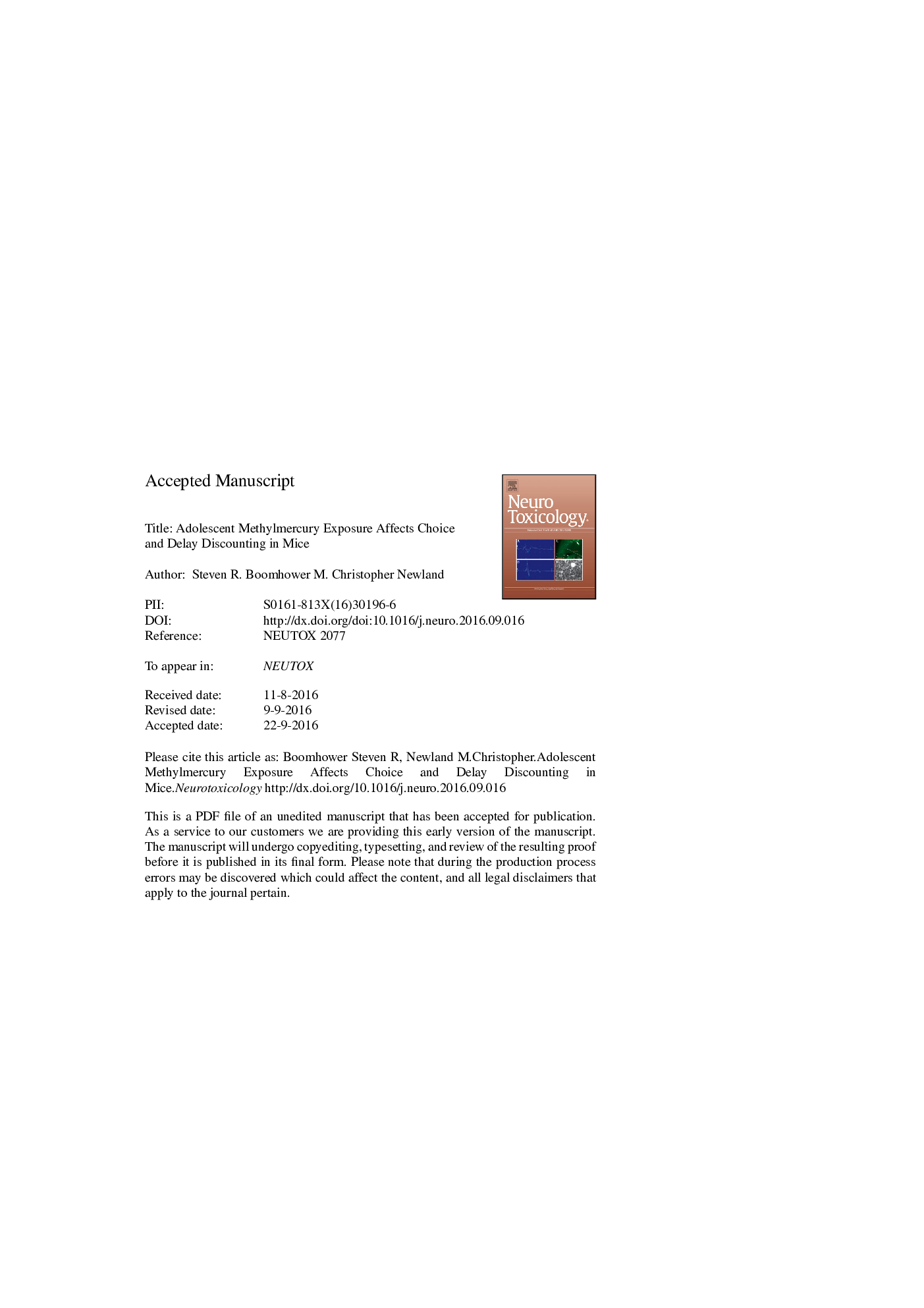| کد مقاله | کد نشریه | سال انتشار | مقاله انگلیسی | نسخه تمام متن |
|---|---|---|---|---|
| 8550450 | 1562037 | 2016 | 37 صفحه PDF | دانلود رایگان |
عنوان انگلیسی مقاله ISI
Adolescent methylmercury exposure affects choice and delay discounting in mice
ترجمه فارسی عنوان
قرار گرفتن در معرض متیل کرکوری نوجوانان بر انتخاب و تخفیف تاخیر در موش تاثیر می گذارد
دانلود مقاله + سفارش ترجمه
دانلود مقاله ISI انگلیسی
رایگان برای ایرانیان
کلمات کلیدی
متیل کرچک، بلوغ، تخفیف تاخیر، انتخاب ضربه ای، مطابق قانون،
موضوعات مرتبط
علوم زیستی و بیوفناوری
علوم محیط زیست
بهداشت، سم شناسی و جهش زایی
چکیده انگلیسی
The developing fetus is vulnerable to low-level exposure to methylmercury (MeHg), an environmental neurotoxicant, but the consequences of exposure during the adolescent period remain virtually unknown. The current experiments were designed to assess the effects of low-level MeHg exposure during adolescence on delay discounting, preference for small, immediate reinforcers over large, delayed ones, using a mouse model. Thirty-six male C57BL/6n mice were exposed to 0, 0.3, or 3.0Â ppm mercury (as MeHg) via drinking water from postnatal day 21 through 59, encompassing the murine adolescent period. As adults, mice lever pressed for a 0.01-cc droplet of milk solution delivered immediately or four 0.01-cc droplets delivered after a delay. Delays ranged from 1.26 to 70.79Â s, and all were presented within a session. A model based on the Generalized Matching Law indicated that sensitivity to reinforcer magnitude was lower for MeHg-exposed mice relative to controls, indicating that responding in MeHg-exposed mice was relatively indifferent to the larger reinforcer. Sensitivity to reinforcer delay was reduced (delay discounting was decreased) in the 0.3-ppm group, but not in the 3.0-ppm group, compared to controls. Adolescence is a developmental period during which the brain and behavior may be vulnerable to MeHg exposure. As with gestational MeHg exposure, the effects are reflected in the impact of reinforcing stimuli.
ناشر
Database: Elsevier - ScienceDirect (ساینس دایرکت)
Journal: NeuroToxicology - Volume 57, December 2016, Pages 136-144
Journal: NeuroToxicology - Volume 57, December 2016, Pages 136-144
نویسندگان
Steven R. Boomhower, M. Christopher Newland,
